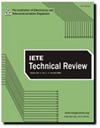用变电力市场定价策略求解微电网系统的环境约束经济调度:一种基于DSM的方法
IF 1.8
4区 计算机科学
Q2 ENGINEERING, ELECTRICAL & ELECTRONIC
引用次数: 2
摘要
微电网(MG)可以被认为是一个精简的电力系统网络,其中电力的产生、传输和分配发生在有限的地理区域内。它们被用来最大限度地利用可再生能源(RES)。微电网还具有诸如减少传输损耗和与此类损耗相关的成本等优势。本文对经济调度、排放调度、基于分式规划的联合经济排放调度和环境约束型经济调度进行了评价。研究了三种不同场景下的MG系统。将传统的灰狼优化器(GWO)、正弦余弦算法(SCA)和乌鸦搜索算法(CSA)的特点相结合,建立了一种新颖、鲁棒、功能强大的群体智能混合算法作为研究的优化工具。在整个研究过程中,采用分时电价(TOU)市场定价策略取代固定定价策略后,发电成本显著降低约4.50-9.75%。此外,本文还讨论了需求侧管理(DSM),通过管理可控负荷需求来降低发电成本。当采用基于15%和20% dsm的修正负荷曲线对MG系统进行ECED评估时,发电成本显著降低。本文章由计算机程序翻译,如有差异,请以英文原文为准。
Solving Environment-Constrained Economic Dispatch for a Microgrid System with Varying Electricity Market Pricing Strategy: A DSM-Based Approach
Microgrids (MG) can be considered as a reduced power system network wherein the generation, transmission, and distribution of power take place within a limited geographical area. They are employed to utilize the maximum penetration of renewable energy sources (RES). Microgrid also has advantages such as reduction of transmission losses and costs pertaining to such losses. In this research, economic dispatch, emission dispatch, combined economic emission dispatch (CEED) based on fractional programming (FP), and environment-constrained economic dispatch (ECED) were assessed. An MG system for three distinct scenarios is studied. A novel, robust, and powerful swarm-intelligence hybrid algorithm, created by amalgamating the features of the conventional gray-wolf optimizer (GWO), sine-cosine algorithm (SCA), and crow search algorithm (CSA), is implemented as the optimization tool for the study. A significant reduction in generation costs of about 4.50-9.75% was achieved throughout the study when the time-of-usage (TOU) electricity market pricing strategy was used instead of the fixed pricing strategy. Furthermore, the paper also dealt with the Demand Side Management (DSM) to facilitate the generation cost by managing the controllable load demand. The generation cost decreased by a notable amount when ECED was evaluated with a 15% and 20% DSM-based revised load curve for the MG system.
求助全文
通过发布文献求助,成功后即可免费获取论文全文。
去求助
来源期刊

IETE Technical Review
工程技术-电信学
CiteScore
5.70
自引率
4.20%
发文量
48
审稿时长
9 months
期刊介绍:
IETE Technical Review is a world leading journal which publishes state-of-the-art review papers and in-depth tutorial papers on current and futuristic technologies in the area of electronics and telecommunications engineering. We also publish original research papers which demonstrate significant advances.
 求助内容:
求助内容: 应助结果提醒方式:
应助结果提醒方式:


